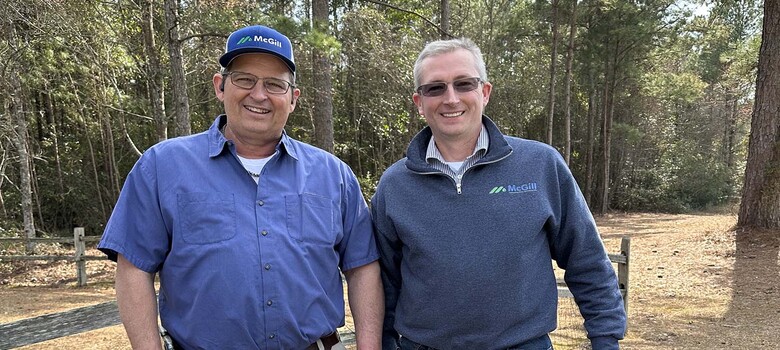 From the DukeHealth.org archives. Content may be out of date.
From the DukeHealth.org archives. Content may be out of date.
Building Better Breast Cancer Treatments

A first-of-its-kind, late-stage breast cancer treatment developed at Duke delivers potent chemotherapy directly to cancer cells while leaving healthy cells relatively intact.
Killing cancer cells is easy when they are bathed in chemotherapy drugs in a laboratory dish, breast cancer specialist Kimberly Blackwell, MD, tells her patients.
But it’s far more complicated to eliminate cancer cells lurking in human bodies.
The very properties in chemotherapy drugs that effectively attack cancer also, unfortunately, attack normal, healthy cells. This conundrum is at the heart of the biggest challenge faced by cancer researchers and clinicians—to find a way of delivering drugs to kill cancerous cells while not harming healthy cells and tissue.
That goal appears to have been achieved by a breast cancer drug Dr. Blackwell studied as the lead researcher in a multinational clinical trial that has generated great excitement among other cancer researchers and physicians. It was approved by the U.S. Food and Drug Administration for the treatment of HER2-positive breast cancer in 2013. HER-2 positive, which comprises up to 25 percent of breast cancer patients.
Commercially known as Kadcyla -- but known during clinical trials as Trastuzumab emtansine or T-DM1 -- takes a powerful antibody (Herceptin) that is highly effective in treating HER-2 positive breast cancer tumors, and combines it with a second powerful chemotherapy agent. This approach ensures that the second “punch” of chemotherapy is delivered specifically to the HER-2 cancer cells targeted by Herceptin, and not to surrounding healthy cells. Some have referred to this as a “smart bomb” approach to treatment because of its specificity in targeting treatment only to diseased cells.
More Effective, Fewer Side Effects
At a meeting of cancer researchers in June 2012, Dr. Blackwell announced that the drug resulted in a 17 percent improvement in overall patient survival at two years compared with standard therapy.
“Usually, patients have to pay a price for the benefits they gain from cancer treatments. And the side effects that go along with traditional chemotherapy can be extremely difficult, leading to a reduction in the amount of treatment we can give,” Dr. Blackwell says. “This is exciting because it shows that linking chemotherapy to an antibody [a protein produced by the body’s immune system when it detects harmful substances] works, and just as importantly, it doesn’t produce side effects such as nausea and hair loss.”
For Dr. Blackwell, the excitement surrounding the potential new weapon against HER-2 positive breast cancer is gratifying. A leader or participant in some of the most important research in breast cancer treatments in recent years, Dr. Blackwell is also a practicing oncologist with a busy clinic full of breast cancer patients eager for help.
Seeing these patients daily has instilled a sense of urgency in Dr. Blackwell to search for better cancer drugs.
Exciting Times
“It’s a devastating disease,” she says. More than 230,000 women were diagnosed with breast cancer and 40,000 died from the disease last year, according to the American Cancer Society. HER-2 positive breast cancer, in which the HER-2 protein is overabundant in cancer cells, is a particularly aggressive form of the disease and accounts for approximately one in five breast cancer patients.
Treatments such as Herceptin have extended the lives of many patients. And new treatments in addition to TDM-1 are being developed. Right before TDM-1's approval, a drug called pertuzumab was approved by the Food and Drug Administration for the treatment of HER-2 positive, late-stage metastatic breast cancer.
“It’s an exciting time in breast cancer treatment, but we have to do better,” Dr. Blackwell says. “I would like to see the day when we no longer use chemotherapy at all.”
Molly’s First Clinical Trial
Patients like Molly Montgomery Hudson could not agree more. Hudson became a patient of Dr. Blackwell’s when her inflammatory breast cancer spread and her local oncologist in the Myrtle Beach, South Carolina, area recommended she seek advanced care at Duke.
Hudson had never participated in a clinical trial but was one of the first to enroll in the study of TDM-1. She says the drug was less harsh than many of the other chemotherapy regimens she previously received.
“I had nosebleeds,” she says, “but I did not lose my hair or my eyebrows.”
That benefit alone is a major advantage, Dr. Blackwell says. “Everything is difficult when dealing with cancer, but the added burden of losing your hair during chemotherapy can have a huge impact on your state of mind,” Dr. Blackwell says. “It was amazing to see people receiving TDM-1 and not losing their hair.”
Hudson, who has been battling breast cancer since 2008, got married in May 2012 and savors every day as a gift. With weekly visits to Dr. Blackwell’s clinic in Durham, Hudson says she wouldn’t hesitate to volunteer for another clinical trial.
“If it was new and they were trying it out to help cure things, I would definitely try,” she says. “Hey, I’m here to be cured.”
With thousands of patients enrolled in cancer research studies at Duke, it would seem many feel the same as Hudson. “Duke offers a wide range of clinical trials, which are testing the latest treatment strategies for many types of cancer,” Dr. Blackwell says. “This is a big advantage for our patients.”
In 2013, Dr. Blackwell was named to TIME magazine's list of the 100 most influential people in the world for her contributions to breast cancer treatments.



